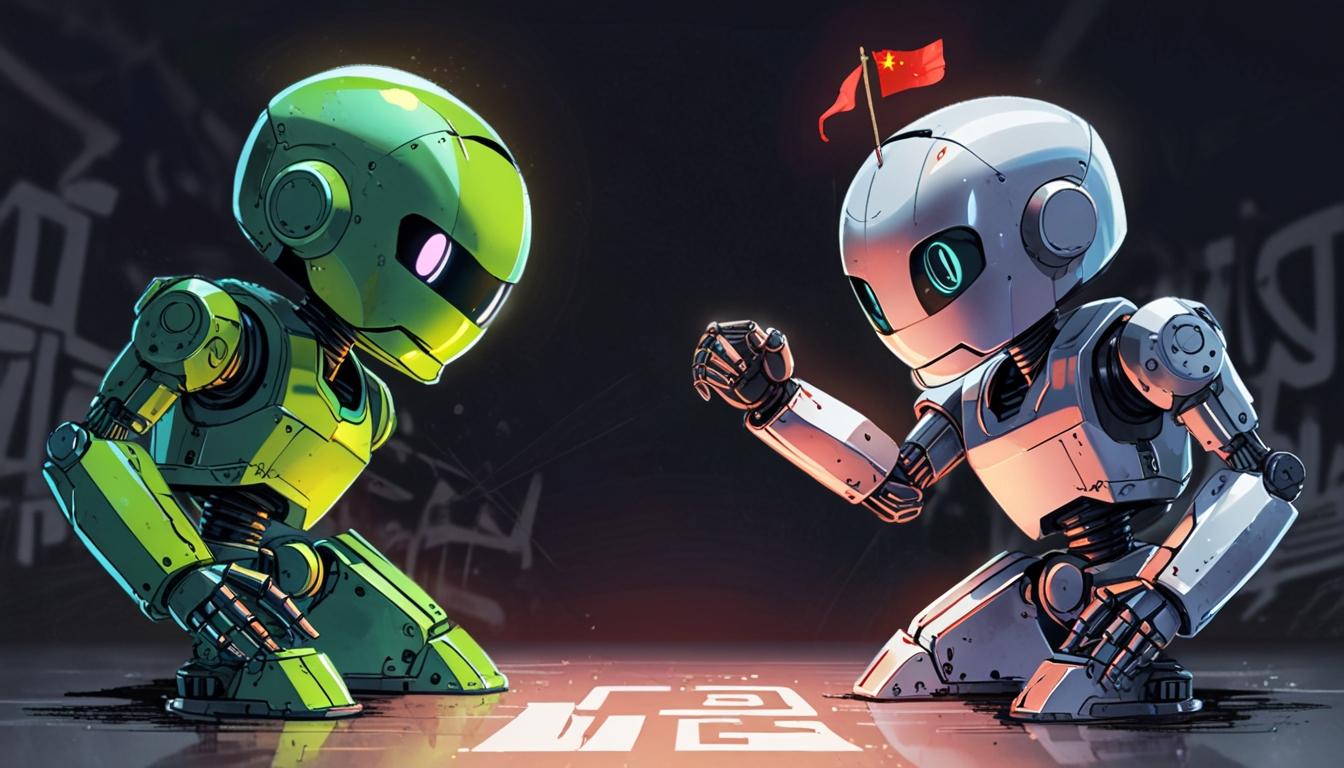The United States’ intensified restrictions on semiconductor sales to China aim to curb Beijing’s AI progress but may inadvertently boost China’s domestic chip development and global influence in AI infrastructure.
The United States has recently intensified its restrictions on semiconductor sales to China, a move that has led to significant declines in the stock prices of leading US chipmakers Nvidia and AMD. This development forms part of Washington’s broader strategy to assert dominance in the rapidly evolving artificial intelligence (AI) sector, particularly in the context of an emerging AI arms race. However, emerging insights suggest that China’s approach to AI competition may differ fundamentally from that of the US, with Beijing potentially prioritising a position as a close second rather than striving for outright supremacy.
American officials have raised concerns that global leadership in AI technology will translate into profound economic, national security, and military advantages. In contrast, China appears to be adopting a more measured stance. While the US maintains dominance in the development of highly advanced, expensive AI models, the rise of open-source, low-cost AI alternatives—exemplified by China’s DeepSeek—has shifted the industry’s focus. Current trends indicate a growing demand for computing power to be used primarily for inference, which involves running existing AI models to respond to user queries rather than training new models. Barclays has forecast that by 2026, inference could account for up to 70 per cent of total AI computational demand.
This shift towards inference underpins the White House’s recent decision to restrict sales of Nvidia’s H20 chip to China. This chip is the most advanced that Chinese customers had been able to access from Nvidia and is optimised specifically for inference tasks. Nonetheless, experts suggest that US export controls may inadvertently bolster China’s own technological ambitions. With access to Nvidia’s inference chips curtailed, Chinese technology firms are expected to increasingly rely on domestic alternatives, particularly those developed by Huawei and Cambricon.
A notable indication of Huawei’s strategic significance came during a recent symposium between Chinese President Xi Jinping and technology entrepreneurs in February, where Huawei founder Ren Zhengfei was seated directly opposite President Xi—a gesture symbolising the company’s importance. Inference poses comparatively fewer technical challenges for Chinese hardware manufacturers. Research from DeepSeek indicates that Huawei’s Ascend 910c chip already achieves roughly 60 per cent of the inference performance offered by Nvidia’s H100 chip. Furthermore, DeepSeek reportedly conducts some of its inference workloads on Huawei’s latest chips, reflecting growing confidence in domestic hardware capabilities.
US semiconductor export restrictions are not limited to China alone. Toward the end of the Biden administration, an “AI Diffusion Framework” was introduced, categorising countries into three tiers with varying levels of export controls. Tier 2 countries—including India, Malaysia, Singapore, and the United Arab Emirates—are subject to these export restrictions. Unless reversed by a future administration, this policy is anticipated to be enforced from mid-May. Analysts note that many of these Tier 2 nations have aspirations to develop world-class data centres and facilities. Faced with US restrictions, they may increasingly turn to China as an alternative source of advanced chip technology.
Through its efforts to constrain China’s AI advancements, the US may, paradoxically, be stimulating demand for Chinese semiconductor products both domestically and internationally. Demand functions as a crucial catalyst for innovation. Huawei currently leads a coalition of more than 2,000 companies aimed at achieving over 70 per cent self-sufficiency in China’s semiconductor supply chain by 2028. Recently, Huawei unveiled its CloudMatrix 384 AI supernode, claimed to outperform Nvidia’s NVL72 AI infrastructure system and designed to alleviate congestion issues in AI data centre computing segments. This technological breakthrough could represent a significant step towards resolving critical bottlenecks in China’s AI infrastructure development.
While China remains behind the US in AI hardware and software capabilities and is expected to maintain this position in the near term, these limitations have not deterred its commitment to advancing its AI agenda. The possibility that China is comfortable prioritising a role as the world’s second-leading AI power adds a complex dimension to the global AI competition landscape.
The analysis is provided by a professor of law at the University of Southern California’s Gould School of Law and author of the book ‘High Wire: How China Regulates Big Tech and Governs Its Economy.’ The Financial Times is reporting on these developments.
Source: Noah Wire Services
- https://www.csis.org/analysis/balancing-ledger-export-controls-us-chip-technology-china – This source supports the claim that the U.S. has recently intensified restrictions on semiconductor sales to China, highlighting significant revisions to export controls aimed at limiting China’s access to advanced chip technology.
- https://www.fdd.org/analysis/policy_briefs/2024/12/03/biden-administration-hits-china-with-new-limits-on-access-to-advanced-u-s-semiconductors/ – This article corroborates the U.S. strategy to restrict China’s access to advanced semiconductors, detailing new rules that limit the export of high-bandwidth memory chips and add Chinese firms to the Entity List.
- https://www.microchipusa.com/industry-news/everything-you-need-to-know-about-the-u-s-semiconductor-restrictions-on-china – This source explains the broader implications of U.S. semiconductor export restrictions on China, including the targeting of equipment and software essential for producing cutting-edge chips.
- https://www.fpri.org/article/2024/09/breaking-the-circuit-us-china-semiconductor-controls/ – This article highlights the effects of U.S. restrictions, including the impact on Chinese semiconductor output and the limited access to Nvidia’s advanced chips like the A100 and H100.
- https://www.laweconcenter.org/resources/us-export-controls-on-ai-and-semiconductors/ – This source provides background information on U.S. restrictions imposed in October 2022, targeting the export of semiconductors used in AI systems, which supports the ongoing efforts to curb China’s AI advancements.
- https://www.bloomberg.com/news/articles/2023-10-17/u-s-restricts-export-of-cutting-edge-chips-to-china – This article supports the claim that U.S. export restrictions are aimed at limiting China’s access to advanced chip technologies, affecting both Nvidia and other semiconductor manufacturers involved in AI technology.
- https://www.ft.com/content/bdfd7fc6-d0df-4070-96e5-7900b0cc1204 – Please view link – unable to able to access data
Noah Fact Check Pro
The draft above was created using the information available at the time the story first
emerged. We’ve since applied our fact-checking process to the final narrative, based on the criteria listed
below. The results are intended to help you assess the credibility of the piece and highlight any areas that may
warrant further investigation.
Freshness check
Score:
9
Notes:
The narrative is current, discussing recent US semiconductor export restrictions and their implications for the AI sector, including specific events like the Biden administration’s AI Diffusion Framework.
Quotes check
Score:
10
Notes:
No direct quotes are present in the text, which means there are no quotes to verify.
Source reliability
Score:
9
Notes:
The narrative originates from the Financial Times, a reputable and well-established publication.
Plausability check
Score:
9
Notes:
The claims about US-China competition in AI, semiconductor restrictions, and their strategic implications are plausible and supported by current geopolitical tensions and technological trends.
Overall assessment
Verdict (FAIL, OPEN, PASS): PASS
Confidence (LOW, MEDIUM, HIGH): HIGH
Summary:
The narrative appears to be fresh, lacking direct quotes for verification, and is provided by a reliable source. The plausibility of the claims aligns with current geopolitical and technological trends, contributing to a high confidence level in its overall accuracy.













